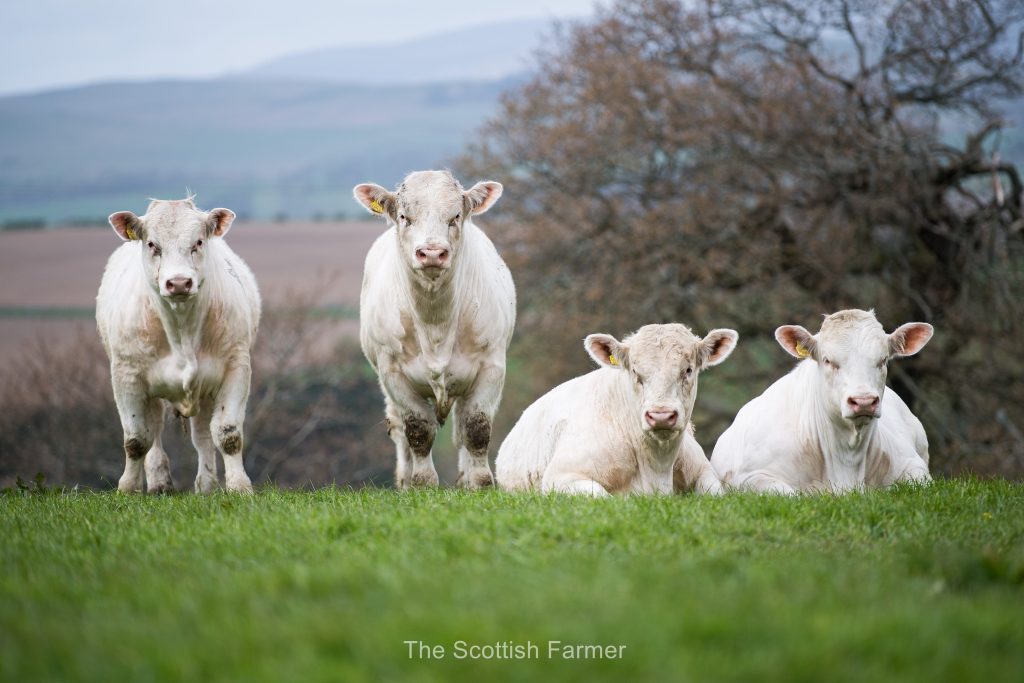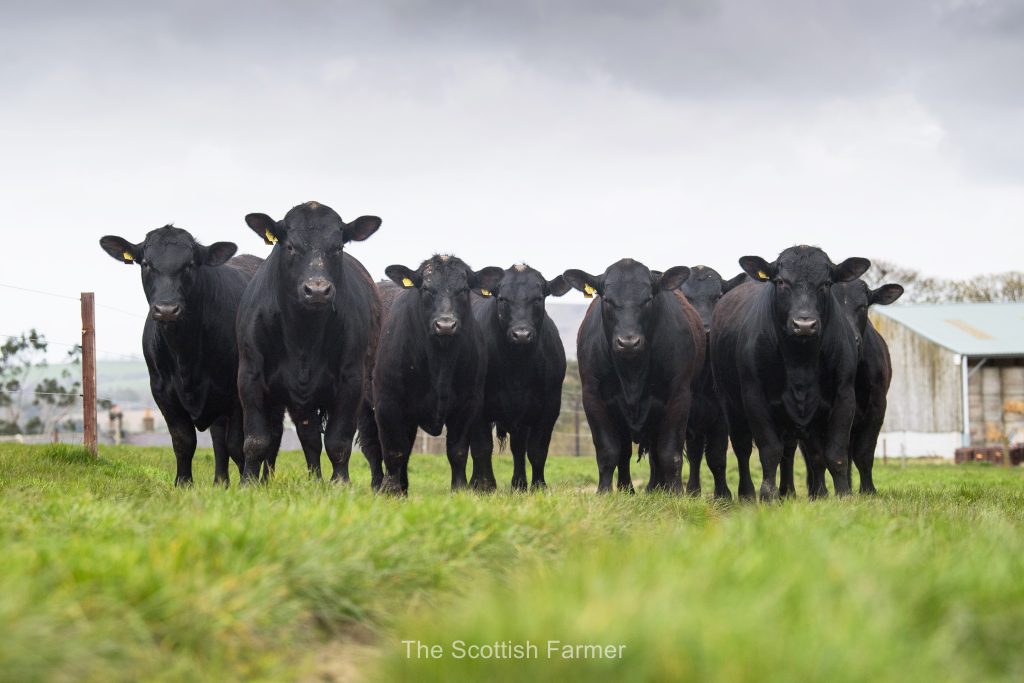Keeping the rumen pH right and the resulting overall well-being of the cattle are the main reasons Ian Campbell and his sons Andrew and Bruce of Thrunton, Alnwick have been using Maxammon treated grain in their diets since 2019.
“I feel the mix we feed which includes Maxammon grain keeps the rumen healthy, with the knock on effect of improving livestock performance. We just feel it is generally better for their health.” says Ian.
The Campbells have been breeding pedigree cattle since the 1970s, introduced by Ian’s father Colin, who was one of the ‘early adopters’ of the Charolais breed. The suckler herd was gradually replaced by pedigree Charolais, starting with heifers coming from the Mearns and Blelack herds. For over five decades now, the Thrunton prefix has been synonymous with producing high quality Charolais and Aberdeen Angus bulls for both pedigree and commercial herds.
On the back of their reputation for breeding good suckler replacements, the Aberdeen Angus was introduced in 2009. Initially AI sires were used until the first stock bull Tonley Kasper was purchased. Tonley Kasper’s first calves averaged over £10,000 at Stirling and upon Kasper’s untimely death, the Campbells then looked for a similarly bred bull. Tonley King Paco – by Tonley Jester Eric and out of Wall Kindpride – was acquired at Stirling in February 2023 where he was reserve champion.
“When looking for a new bull, the first point is that he has to look good. He has to have a good head, meat in all the right places, be correct on his feet and legs, have good health status and, be from a proven breeding line. Good performance figures are desirable.” says Ian.
“Our latest Charolais stock bull Rutherston Sonny was bought from Stirling in partnership with the Marwood Herd for 26,000gns in October 2022 where he awarded senior champion. He was bought for his natural fleshing ability and his first calves were easy born and look promising.”
It is very much team work at Thrunton where they currently run 70 Charolais and 30 Aberdeen Angus cows and have been making their own coarse mixes for over 40 years. With help from Harbro‘s ruminant specialist Murray Smith, mixes – for young calves right through to cattle destined for sales – are formulated to meet the performance targets, with health and fertility always in mind for the top quality stock at Thrunton.
The feed rations are made from raw materials including Champion Rumitech 35 protein pellets, minerals including Rumitech, bruised Maxammon barley and oats, sugar beet pulp and flaked maize. Straw is fed for roughage and growing cattle and cows are supplemented with silage over the winter.
“I’m incredibly pleased with the performance of the cattle at Thrunton and the cattle health we’re seeing.” says Murray Smith, Harbro ruminant specialist. “Feeding Maxammon is just about getting the basic rumen health right, to allow the rumen bugs to make the most out of the rest of the diet. It’s really easy to treat and a great way for farmers to make the most out of their home-grown cereal – it really cuts down on the amount of protein they need to buy in.”
Bulls are sold privately off the farm and through pedigree sales at Stirling and Carlisle with an emphasis on having bulls that are ‘fit not fat’ and will go on and perform for their purchasers. Bulls not only have to look the part and carry the breed features but figures matter with attention paid to EBVs and myostatins and carrying a bloodline that has a proven performance.
The most recent Charolais breed society sale at Carlisle in May saw senior bull Thrunton Trouper change hands for 10,000gns. Trouper who was born in November 2022 was homebred on both sides.
“We have seen good weight gain since we started feeding Maxammon cereals and we get very little scour or feet issues. The treatment also keeps the dust down and we find the grain bruises better too.” says Ian.
“We don’t have a grain dryer and we are able to safely store our grain if it is treated with Maxammon. We process the grain ourselves – 90 tonnes of barley and 90 tonnes of oats – and hire in a neighbour’s diet feeder which is fast and has a large capacity. We leave the grain whole and treat it over one to two days.
“A few years ago, I read of the success with Maxammon for others, it has worked for us and we fully intend to keep using it.”



